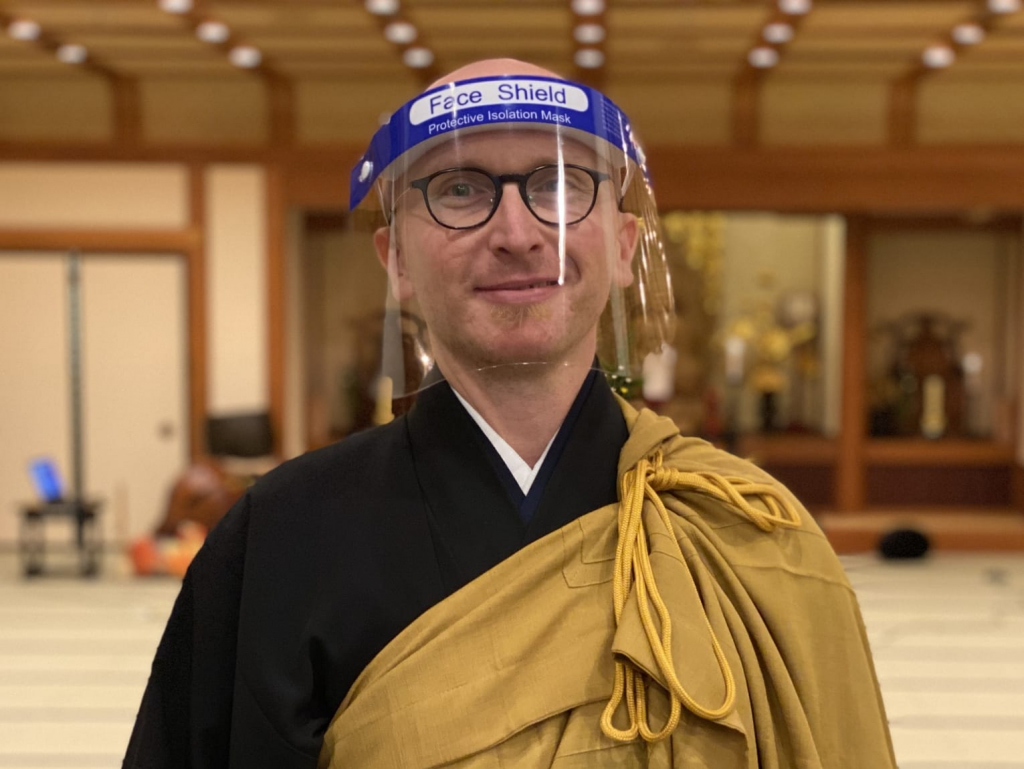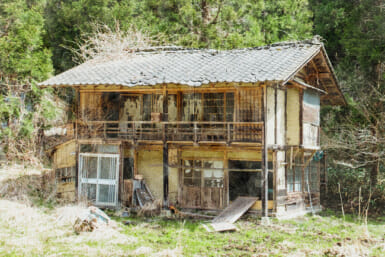There are a few phrases we’ve grown tired of in this pandemic — “hope this finds you well in those uncertain times” (as if they’ve ever been certain), “how’s your stay-home life?” (how can it be?), and “what do you want to do after the pandemic is concealed?” (everything that comes to mind really). But the one phrase that gives us more shivers than anything else is “the new normal.” It’s the only one we can’t possibly explain, nor imagine. It’s also the most uncertain one. Accepting the new normal is a coping mechanism, but I like to add “temporary” to it, in an undying hope that this will not last forever. Some safety measures in this new normal we might end up keeping, while for some, we can’t wait to be over.
Since March 2020, we have adopted the basic most prominent safety measures – increased mask-wearing, hand-sanitizing, body temperature measuring at the entrance of some establishments. There is also an attempt at social distancing in waiting lines, albeit not enough as only one to two meters are required by most stores. Eating and drinking establishments have tried providing more outdoor seating, public transport has been leaving windows open for ventilation, and working remotely has become an option in Japan, among other things. However, none of these measures are enforced thoroughly, with many establishments being often blamed for merely performing “security theatre.”
Looking beyond these everyday places we frequent, there are a few industries that affect our lives on a deeper level. Read on to find out what the “new normal” safety measures in the pandemic are for those facets of life in Japan.
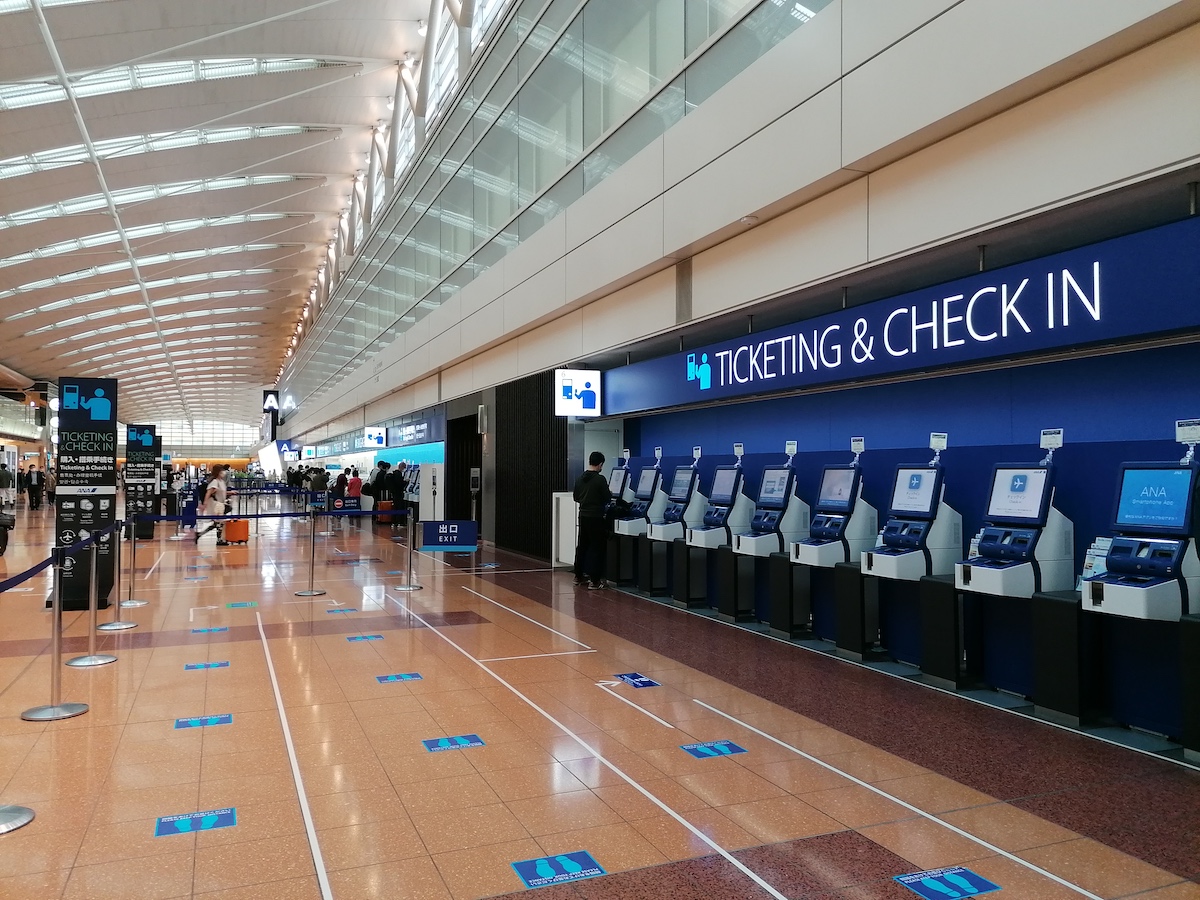
Haneda Airport, October 2020. Photo by Zoria Petkoska
Flying domestically in the pandemic
Unlike international air travel, domestic air travel in Japan never really stopped, only slowed down. Flights have been reduced but still available, as even the government encourages domestic tourism with their Go To Travel campaign. Online check-in and printing your boarding pass at self-check-in machines were available even pre-pandemic, but they became ever more important now. Together with an automated check-in luggage drop and your airline sending you an email a day in advance informing you of the boarding gate for your flight, contact with staff at the airport is minimal. Mask wearing and social distancing at all times in the airport is encouraged but not enforced. Hand sanitizer is available at every corner.
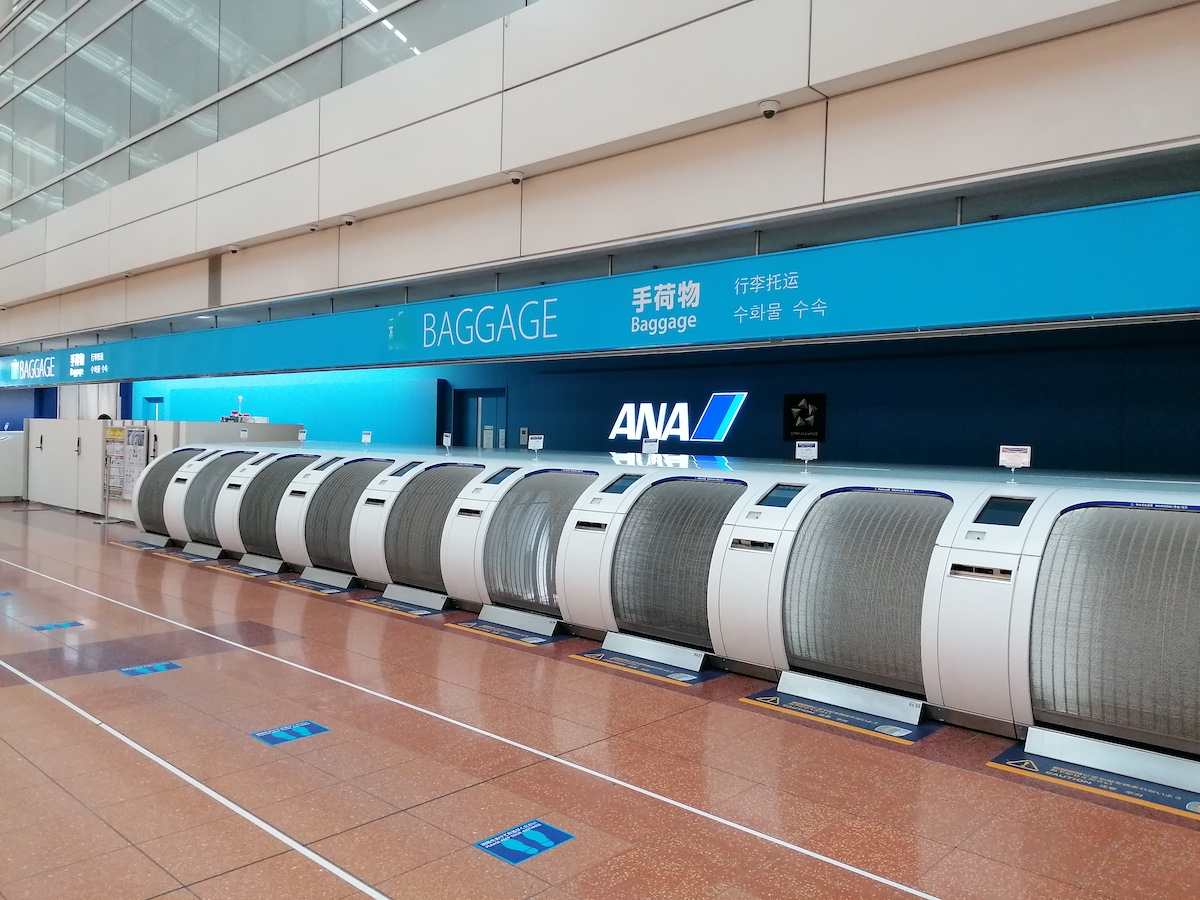
Automated check-in luggage drop at Haneda Airport, October 2020. Photo by Zoria Petkoska
When it comes to safety measures inside the aircraft, ANA, one of Japan’s airline giants, has changed all air filters for high-grade ones that circulate the air every few minutes and are used in medical facilities. In-flight magazines and newspapers are no longer distributed and so are not blankets and other sharable items. Wearing a mask is mandatory from beginning to the end of the flight in all Japanese airlines — in fact, you can be kindly asked to leave the aircraft if you refuse to wear one while onboard. Onboard announcements will remind you to wear your mask even while asleep.

Hand sanitizers can currently be found everywhere in Japan. This one is at the ANA automatic baggage drop counter at Haneda Airport. Photo by Zoria Petkoska
Having said that, however, proper mask-wearing (covering your nose and mouth completely) is not strictly enforced during the flight, even though it could easily be added to the list of things a flight attendant has to check such as the seat-belt, seat reclining position, hand luggage placement during take-off and so on. Another point of concern is that even though the airlines initially try to leave the middle seat empty to help with distancing, it is not a guarantee, and they start filling in those seats too if there are more passengers. Last but not least, Japanese airlines ask only for hands disinfection but have yet to reach the more advanced safety measures of airlines like The Emirates who do rapid Covid-19 testing before the flight and put each passenger in a sanitation pod before boarding the aircraft.
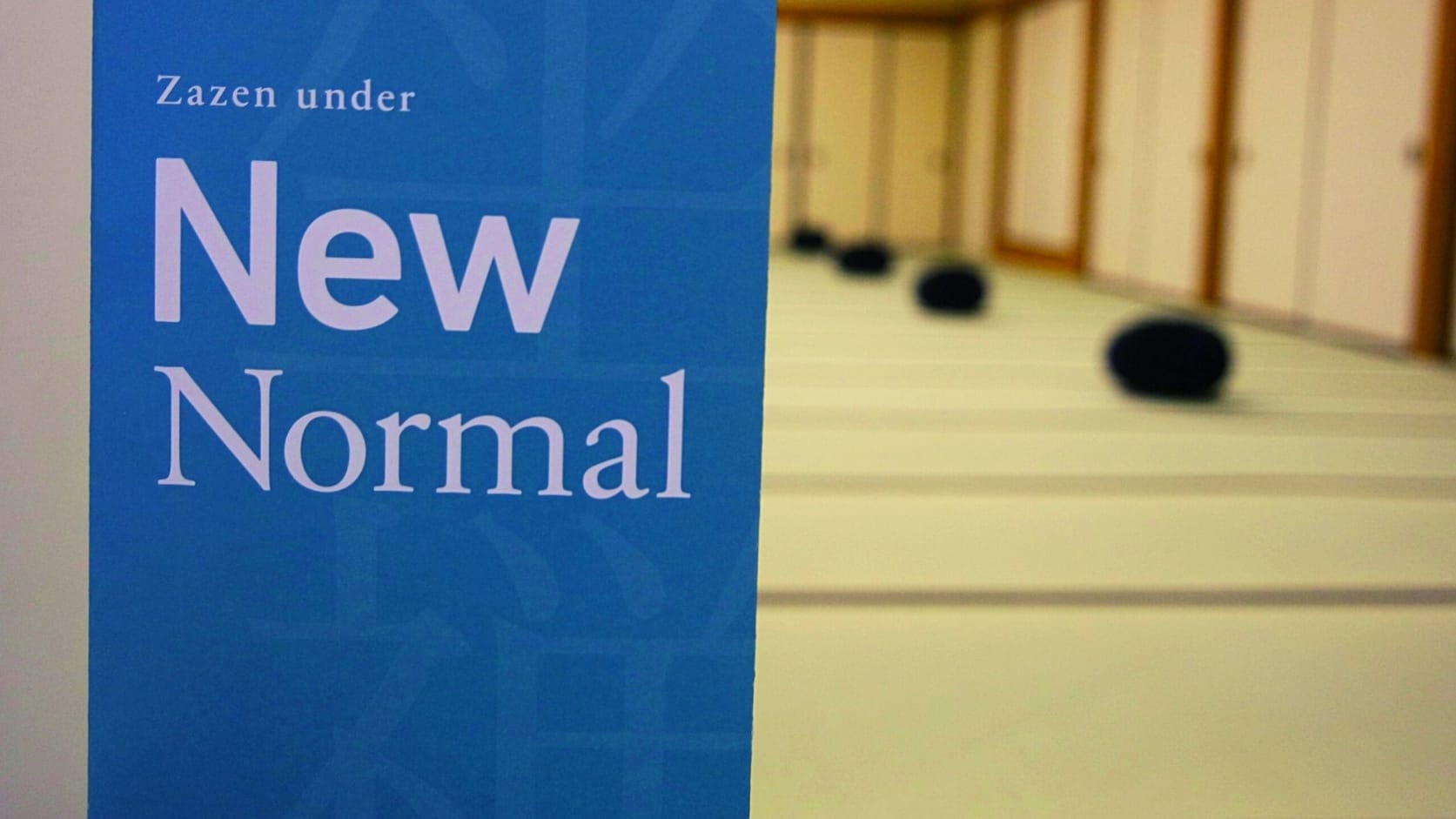
A “New Normal” poster in front of a Zazen meditation room in Tokyo. Photo by Zoria Petkoska
Zen practice in the pandemic
Not even the spiritual is exempt from the pandemic. The International Department of Soto Zen in Tokyo quickly adapted though, and started streaming its monthly Zen meditation sessions online. This actually opened them to a bigger audience, so when they finally returned to an in-person Zazen session in September 2020, they streamed it online for those who couldn’t be present. This second phase of the new normal meant fewer participants, pre-registration, body temperature measuring and hand sanitizing upon entering, and mask-wearing at all times. To avoid bottle-necking, participants took turns to enter and exit the room one by one.
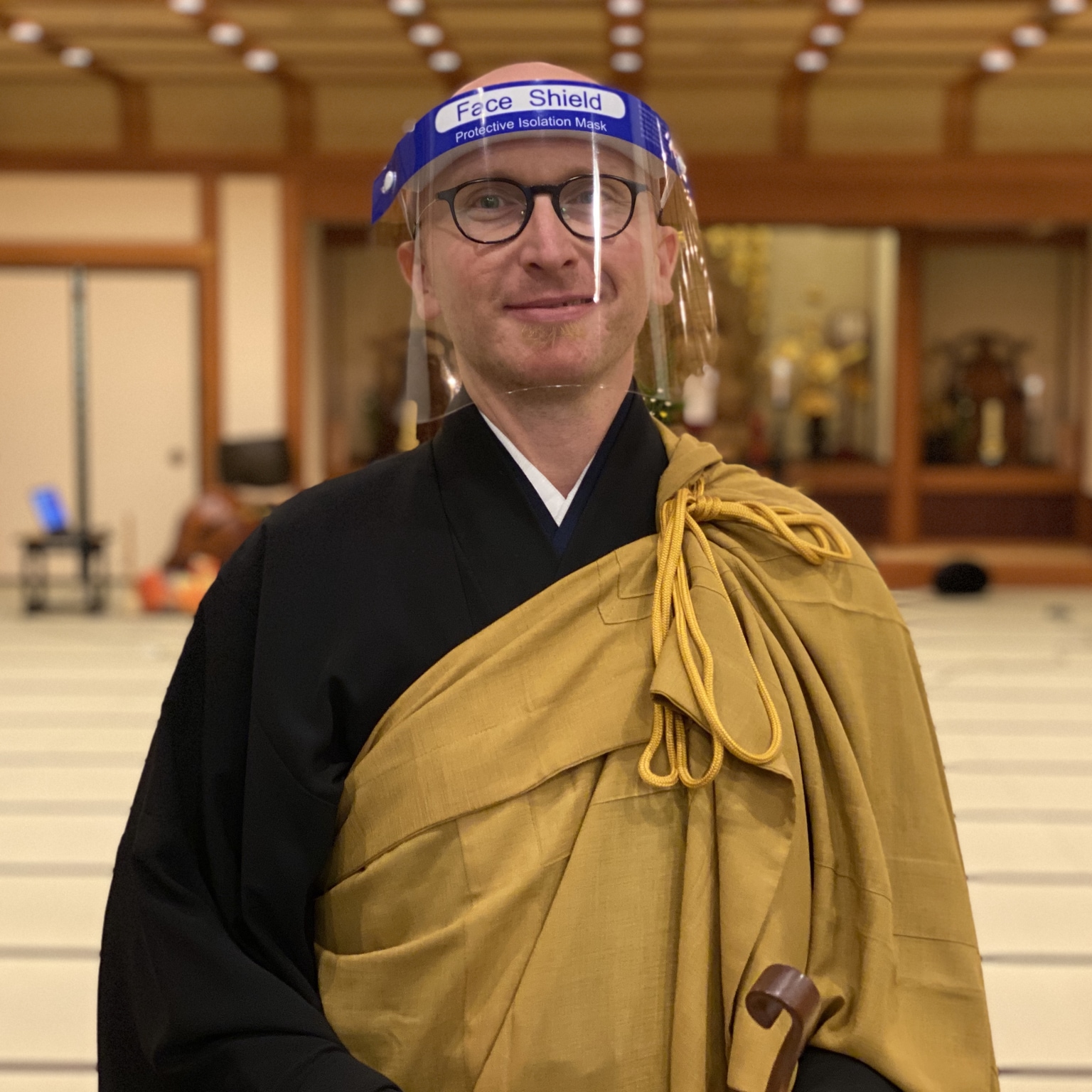
Rev. Hojun Spzpunar (pictured above), who leads the sessions, wore a face shield for the first time during the September session, so participants could see and hear him better. However, he admitted to some troubleshooting issues, especially in one part of the ceremony when he is supposed to bow until his forehead touches the floor. The most common plastic shield in Japan is fastened on the forehead, so Rev. Hojun could not feel the floor. In the end, what matters is that people can still find some much-needed peace of mind, whether online or in-person with the new safety measures.
Churchgoing in the pandemic
Another religious institution in Tokyo is tackling the pandemic even better than expected. In addition to mask-wearing and hand-sanitizing, the Orthodox Christian Cathedral Nikolai-do in Ochanomizu gathers information for potential contact tracing. People attending mass are asked to drop their contact details in a box, which is not checked unless there is a coronavirus case, thus guaranteeing privacy. Even more commendable is how this church has adapted its sacred ritual of accepting the Eucharist after mass. Traditionally, the body and blood of Christ is distributed with the same silver spoon, but in this pandemic, they offer it in clean, separate paper cups. “A brave decision, considering this is controversial for traditionalists,” a member of the congregation shared.
The Catholic Church of Japan closed down during the state of emergency in Tokyo, with the occasional video Sunday mass. It resumed operation in May 2020 with additional safety measures such as limiting the reception hours, hand-sanitizing, reducing the number of participants, requiring pre-registration and gathering information for contact tracing. They advise disinfecting the hands right before accepting Holy Communion and ask people not to sing the hymns together. Mass for important holidays is consistently streamed online.
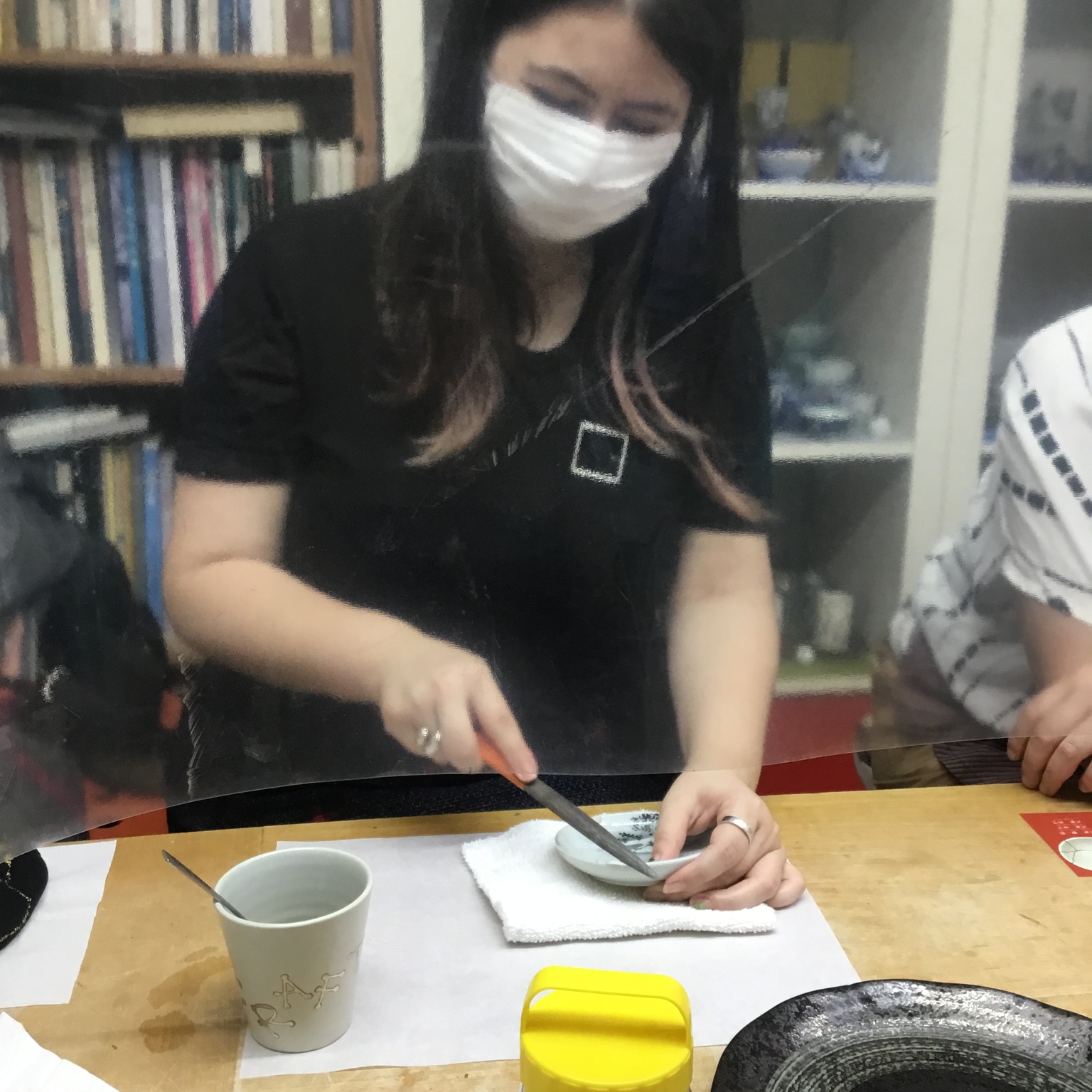
Craft workshops and studios in the pandemic
Initially closing during the state of emergency, independent craft workshops had to resume operation and decide which measures to implement. In addition to mask-wearing and hand-sanitizing, some workshops also make sure to naturally ventilate the room, check body temperature and significantly reduce the maximum number of people in the space.
Teshitoya Kuge, pottery and kintsugi workshop in Suginami, has installed a plastic curtain between teachers and students (photo above), but they admit that it is challenging to teach something as hands-on as pottery with that specific safety measure.
The masks and the curtain muffle the sound and blur the vision while passing objects and tools between students and teachers are necessary.
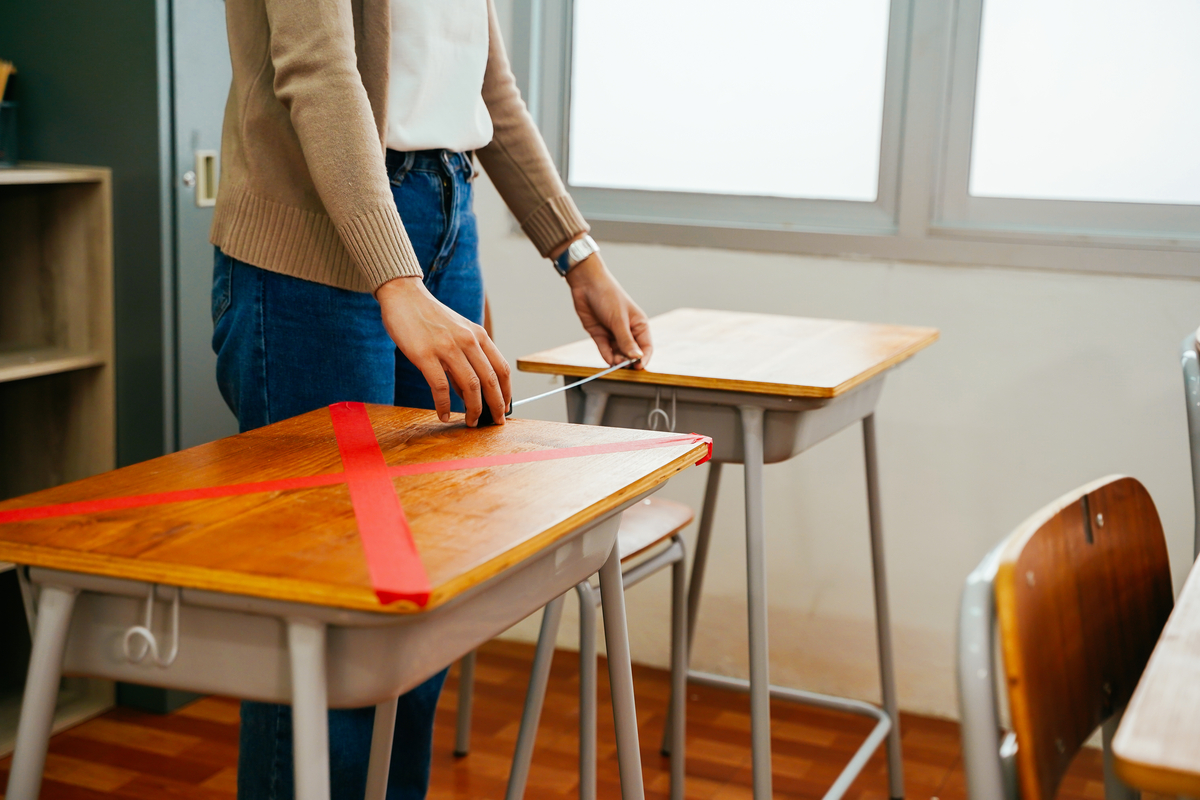
English teaching/learning in the pandemic
One of the riskier jobs during the pandemic, one on one or small group language lessons engage in all the three C’s we’ve been told to avoid — close-contact, closed spaces and crowdedness.
English teachers I’ve spoken with say they are required to wear a mask and a face shield, while the students are required to wear a mask too. Body temperature is taken daily. However, many schools do not have proper ventilation and the teaching cubicles make distancing impossible, one of the prominent examples being GABA schools. This remains a challenge in the English teaching landscape, as well as any one-on-one lesson for that matter.

A Japanese Sign at a playground in Hokkaido, reading “keep 2-meters distance while playing.”
Entertainment events in the pandemic
With the big-name theme parks reopening, there was no reason not to resume smaller entertainment events too. While it is a challenge to control visitors, many entertainment and gaming events are doing a better job than many restaurants and bars. Museums and galleries have been implementing all basic measures, as well as reducing the number of visitors. Some small galleries have also started requiring pre-registration for visitors to avoid crowding. The Tokyo International Film festival will be leaving empty seats around each booked seat in the theatre, in addition to all basic measures.
Music gigs have proven trickier, and there is a great divide on the Tokyo music scene between those who are for resuming events, and those who aren’t – both the venues staying closed, and musicians staying home, at a huge financial cost. Most venues that reopened follow basic guidelines about disinfecting surfaces and staff wearing masks at all times, but not measuring body temperature or gathering contact tracing info.
When it comes to gaming events, there’s the example of the Warhammer 40K community in Tokyo. They have resumed hosting tournaments, but with rigorous measures – mask-wearing, social distancing, no handshakes and no sharing dice and other tools. They are also asking everyone to download the government’s COCOA app for contact tracing purposes.
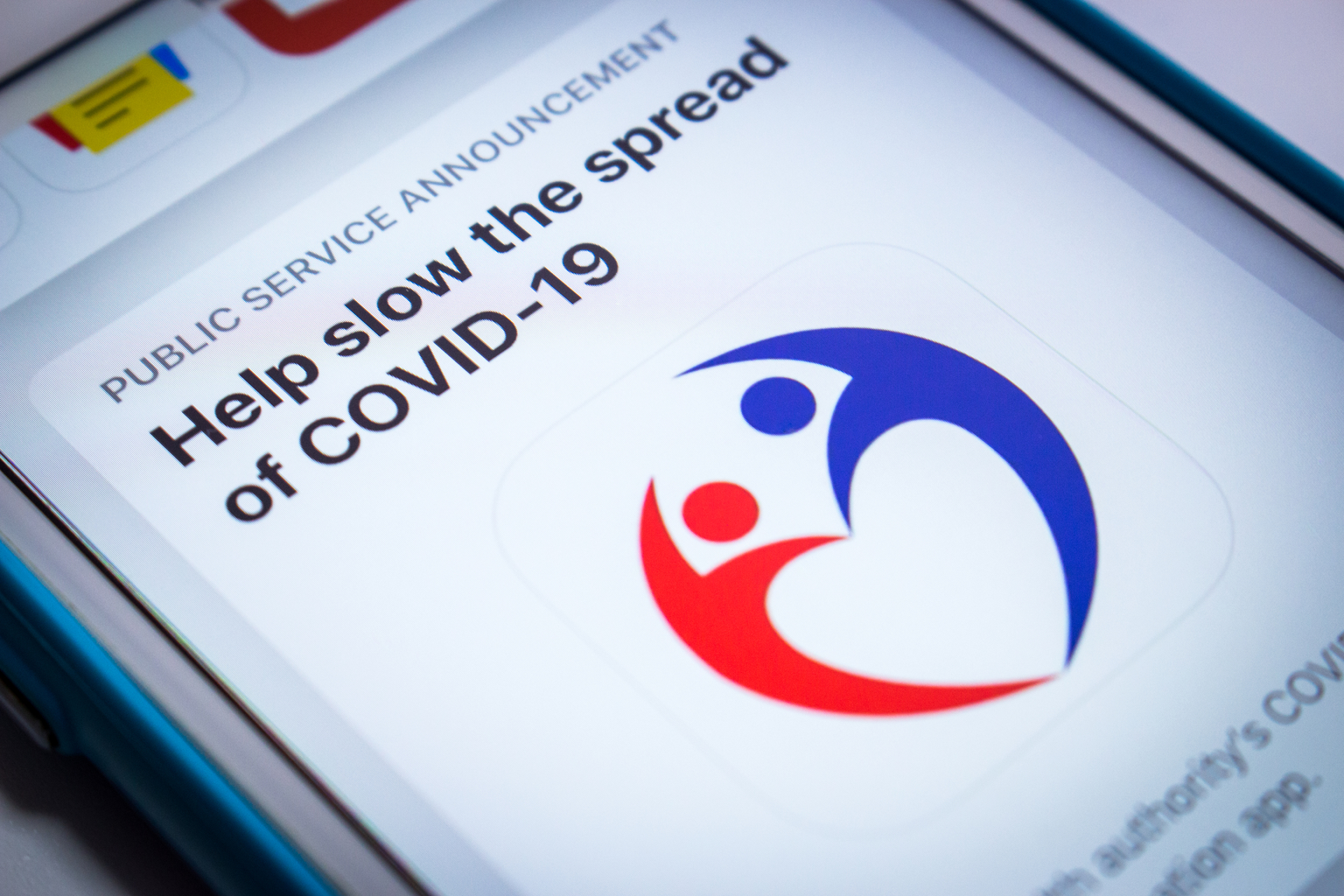
COCOA, the new Coronavirus contact-tracing app by Ministry of Health, Labour and Welfare of Japan. Shutterstock
Unsurprisingly, the pandemic has touched and changed every aspect of our lives, whether temporarily or permanently. When it comes to air travel measures, many of us would like to keep that seamless check-in and boarding, as well as sanitizing, even after the pandemic. However, the people who attend spiritual gatherings lament the loss of community, as before the pandemic, they used to socialize and talk after the Zazen or mass.
Teachers as well have expressed concern that learning is more difficult in an awkward atmosphere. For craftspeople, they hope for the day they can take the plastic barrier down — as we all hope for the day when we won’t have to stay two meters apart from friends.
For more coverage on how the Covid-19 pandemic has affected various industries in Japan, see our special Covid-19 page here.

